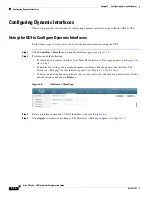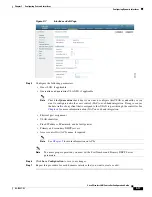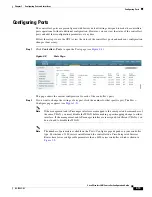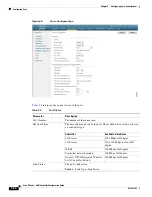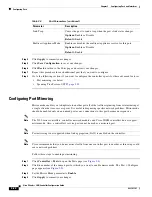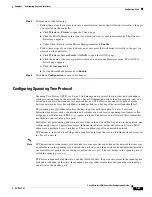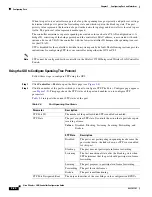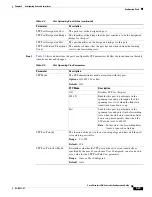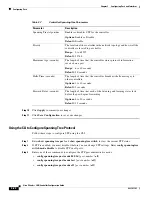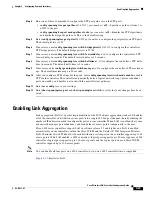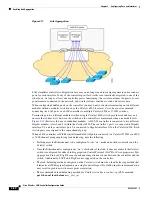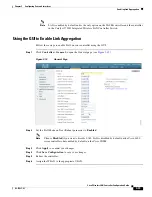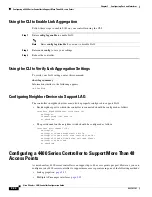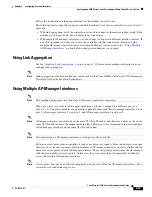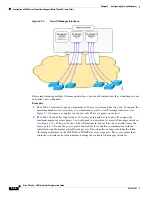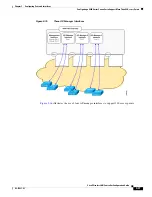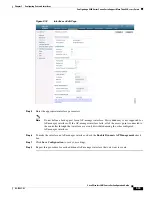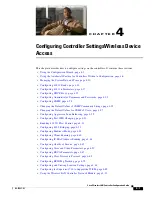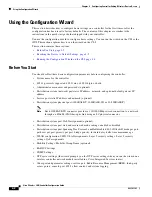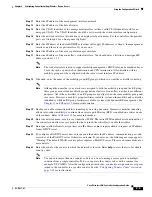
3-30
Cisco Wireless LAN Controller Configuration Guide
OL-17037-01
Chapter 3 Configuring Ports and Interfaces
Enabling Link Aggregation
Figure 3-11
Link Aggregation
LAG simplifies controller configuration because you no longer need to configure primary and secondary
ports for each interface. If any of the controller ports fail, traffic is automatically migrated to one of the
other ports. As long as at least one controller port is functioning, the system continues to operate, access
points remain connected to the network, and wireless clients continue to send and receive data.
When configuring bundled ports on the controller, you may want to consider terminating on two different
modules within a modular switch such as the Catalyst 6500; however, Cisco does not recommend
connecting the LAG ports of a 4400 controller to multiple Catalyst 6500 or 3750G switches.
Terminating on two different modules within a single Catalyst 6500 switch provides redundancy and
ensures that connectivity between the switch and the controller is maintained when one module fails.
illustrates this use of redundant modules. A 4402-50 controller is connected to two different
Gigabit modules (slots 2 and 3) within the Catalyst 6500. The controller’s port 1 is connected to Gigabit
interface 3/1, and the controller’s port 2 is connected to Gigabit interface 2/1 on the Catalyst 6500. Both
switch ports are assigned to the same channel group.
When a 4404 controller or WiSM controller module LAG port is connected to a Catalyst 3750G or a 6500
or 7600 channel group employing load balancing, note the following:
•
LAG requires the Etherchannel to be configured for the “on” mode on both the controller and the
Catalyst switch.
•
Once the Etherchannel is configured as “on” at both ends of the link, it does not matter if the Catalyst
switch is configured for either Link Aggregation Control Protocol (LACP) or Cisco proprietary Port
Aggregation Protocol (PAgP) because no channel negotiation is done between the controller and the
switch. Additionally, LACP and PAgP are not supported on the controller.
•
The load-balancing method configured on the Catalyst switch must be a load-balancing method that
terminates all IP datagram fragments on a single controller port. Not following this recommendation
may result in problems with access point association.
•
The recommended load-balancing method for Catalyst switches is src-dest-ip (CLI command:
port-channel load-balance
src_dest_ip
).

